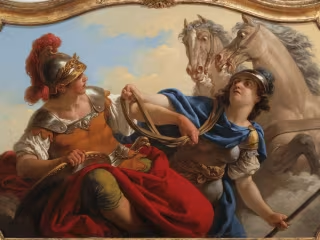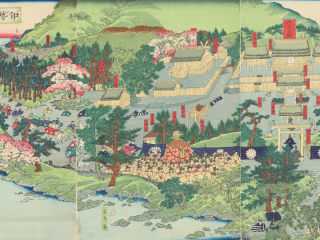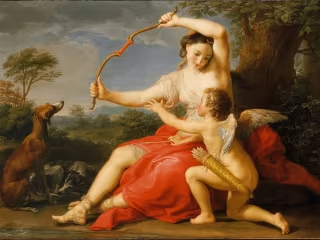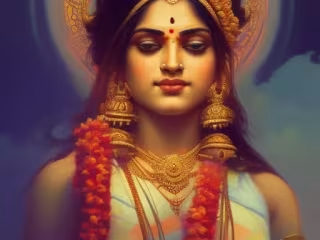Durga: The Powerful Warrior Goddess
0
Ghostwriter
Blog Writer
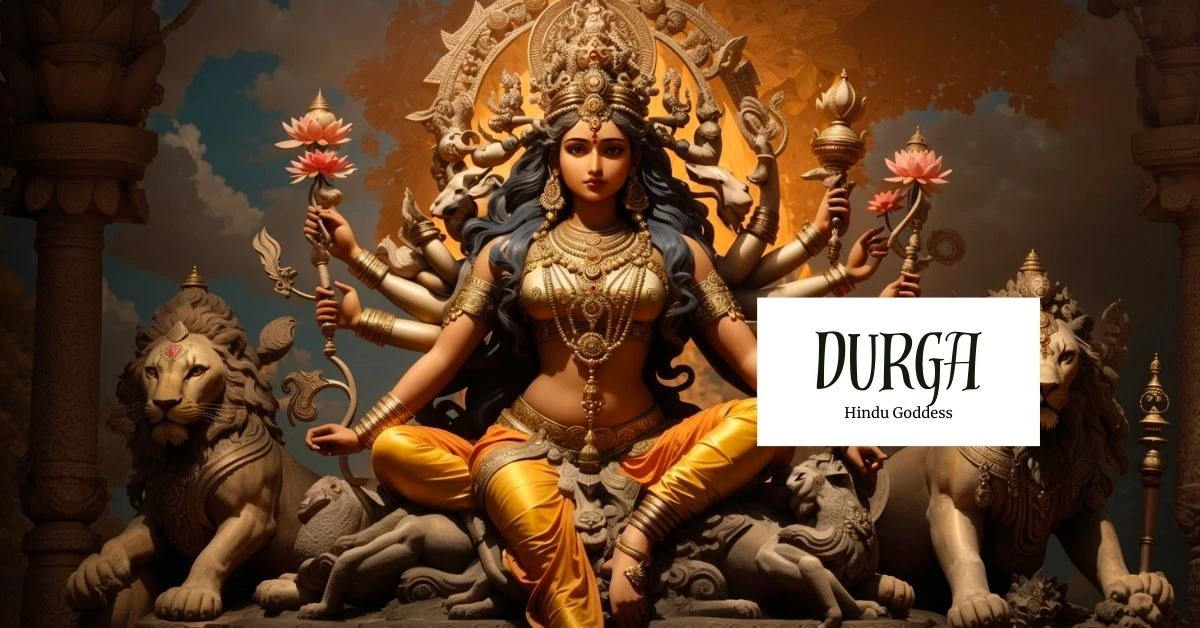
Durga, the Hindu goddess, is an awe-inspiring deity who embodies the essence of feminine strength and courage. In Indian mythology, Durga holds a significant position among the highest divine beings, and millions of devotees worship her with utmost devotion. As the supreme goddess, she epitomizes piousness and protects her followers, and serves as a symbol of feminine power. Her conquests are legendary, from slaying the buffalo demon Mahishasura to creating Kali. The unwavering determination of the warrior goddess has earned her the reverence and admiration of countless believers.
Overview of Durga
Durga is a divine symbol of feminine power and energy, considered as a form of the mother goddess Devi. The mother goddess Devi is a primordial goddess in Hindu mythology and is responsible for creating the universe. As one of the central forms of Devi, many Hindus worship her as the ultimate source of all life (Mantooth).
As a formidable source of nature, her name is as powerful as her heart, the name Durga derives from the Sanskrit language, and it translates to “the invincible” or “the inaccessible” (Wikipedia Contributors). Durga goes by many names, including Ambika, Bhavani, and Mahishasura Mardini. From mythology to art and literature, the warrior goddess Durga is an integral part of the rich tapestry of Hinduism.
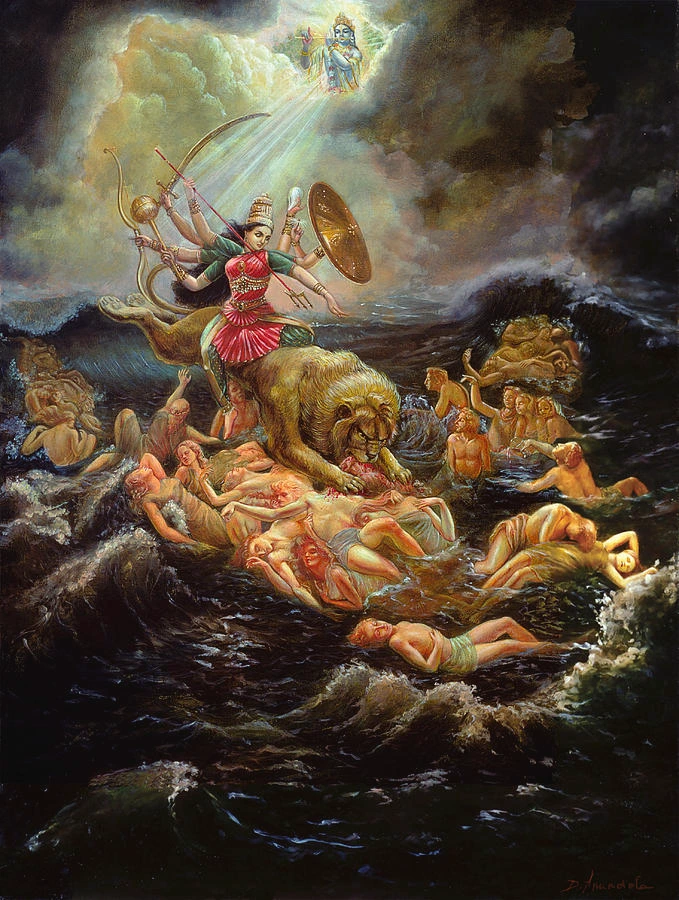
Source: Pixels
Titles
The Fierce and Wrathful One
The Slayer of the Buffalo Demon
The Divine Mother
Abilities
Durga is the ultimate power behind the universe and is the universe itself. From her comes everything, and from her, all things exist. Durga embodies both matter and mind and is Prakriti, which is the manifestation of the entire physical world. According to the Devi Mahatmya, a sacred Hindu text, the goddess Durga is the universal mother who nourishes and sustains all living beings. Within each living creature, Durga manifests as the vital energy that procreates, supports, and gives each species a unique identity. Apart from being the source of all creation, Durga is also Maya. Maya is the illusionary energy that makes people think of themselves as separate from universal consciousness. However, only when the divine Shakti meets the Shiva within a person can they experience the state of expanded consciousness. This process is catalyzed only by the powerful Durga, whose awe-inspiring powers sustain the universe (sakhasuadm).
Characteristics
Durga is depicted as a radiant goddess with a serene expression and a majestic aura. Her golden complexion radiates divine light, symbolizing her celestial nature. With multiple arms, typically eight or ten, she represents unparalleled strength and the ability to accomplish many tasks. In many illustrations, she is atop a lion, which displays her fearlessness and authority, harnessing immense power as she protects against evil forces. These physical characteristics embody her divine beauty and commanding presence and inspire devotion from her worshippers.
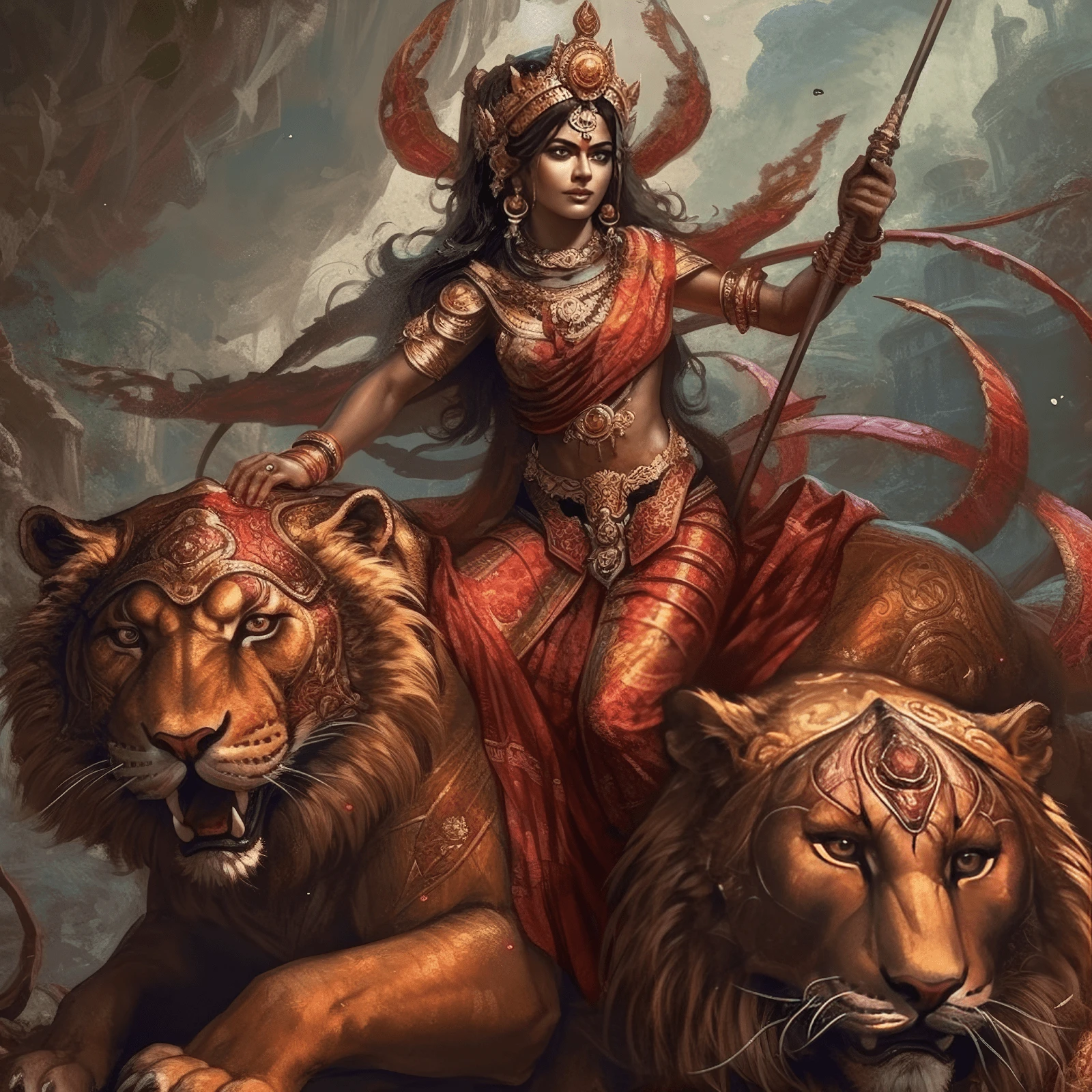
Source: Vecteezy
Traits
Durga is a goddess with varying attributes that sustain her role as a nurturer and protector. However, her unrelenting courage in the face of evil is why many worship her. Durga fearlessly takes on any challenge that comes her way and never backs down. Aside from her courage, Durga is also known for her compassionate nature. The goddess extends her loving care and protection to those in need, always ready to lend a hand to anyone who requires her help. Durga’s compassionate heart reflects her deep understanding of the human condition, and her ability to connect with people on an emotional level is truly remarkable.
Another defining aspect of Durga’s character is her motherly love, which she embodies with grace and beauty. Durga’s unconditional love for her devotees is akin to how a mother loves a child. Nurturing and guiding her followers on the path of righteousness, she always provides them with the support and encouragement they need to overcome life’s challenges. This motherly love makes Durga such an inspiring figure to her devotees, who look up to her as a source of strength and guidance in their lives.
Symbols
Durga’s various symbols represent her power, protection, and divine presence. The trident, for example, signifies her ability to destroy evil and reminds devotees of her transformative energy. The conch shell represents the primordial sound of creation and purifies the environment, while the lotus symbolizes purity, beauty, and spiritual enlightenment, embodying Durga’s divine attributes. Lions are also another symbol she is often illustrated with as they represent the desire for lust and embody strength.
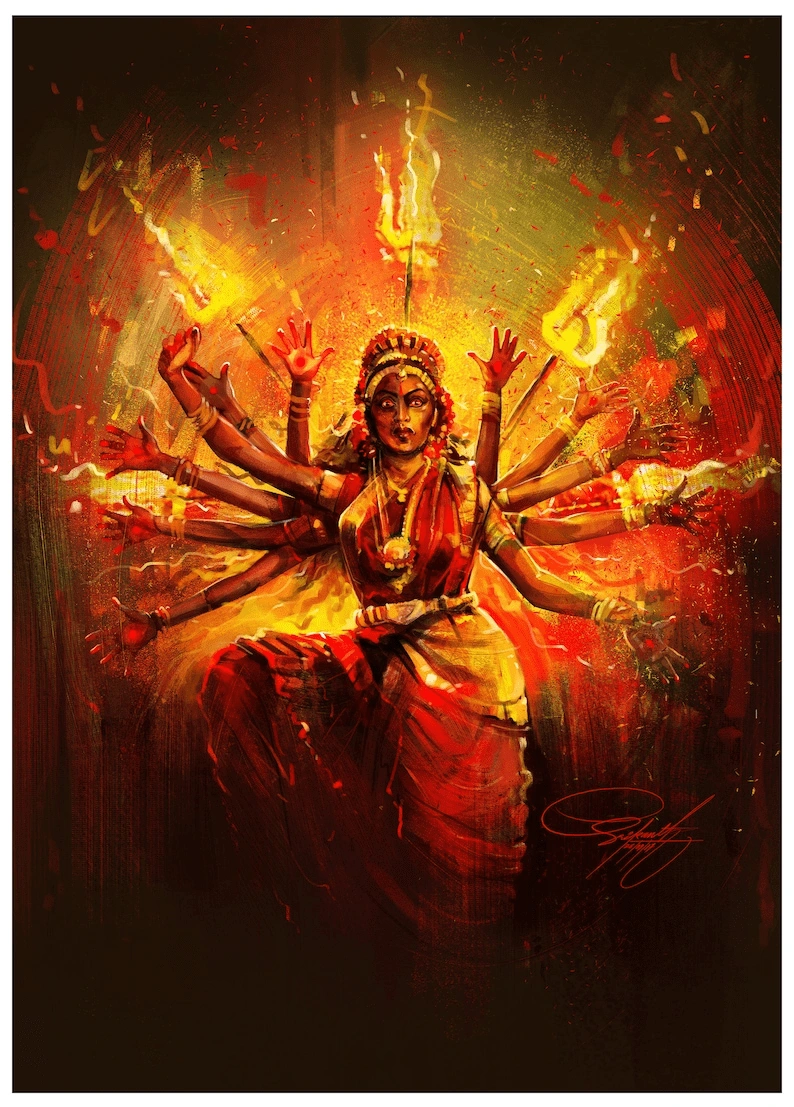
Source: Etsy
Festivals and Rituals
Durga is honored through various festivals and rituals celebrated by Hindus worldwide. The most significant is Durga Puja, a ten-day festival dedicated to the goddess. Elaborate ceremonies, devotional songs, and vibrant processions mark this occasion. Another important festival is Navaratri, a nine-night celebration where people worship different aspects of Durga. Devotees observe fasts, perform special prayers, and engage in cultural festivities to seek the blessings of the goddess (Wikipedia Contributors).
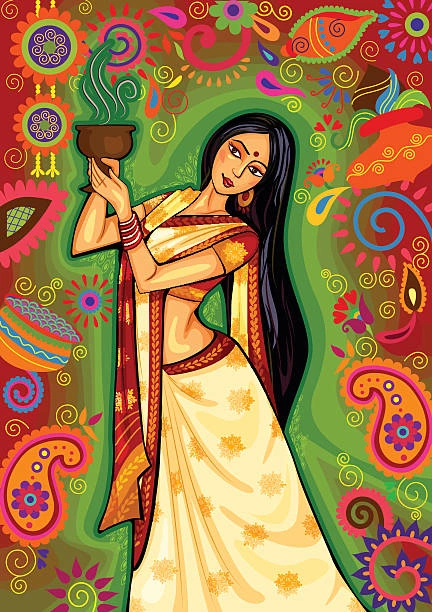
Source: istockphoto
Legends associated with Durga
Durga is a highly revered figure in Hindu religious practices, with her rich mythology of tales captivating millions of devotees worldwide. Stories such as Durga’s slaying of Mahishasura and her battle against Raktabija have contributed to her significant place in traditional Hindu beliefs.
Origin story
The origin story of Durga varies across different sources and traditions, reflecting the diversity of Hindu mythology. However, the most widely accepted version of her creation tells of the gods’ inability to defeat the buffalo demon Mahishasura, leading to their merging of energies to manifest Durga. In the Devi Mahatmya, a sacred Hindu scripture, the legend narrates how the invincible Mahishasura wreaked havoc on Earth, causing mayhem and terrorizing the gods and humans alike. All the Hindu gods then unified their energies and created Durga, bestowing her their divine weapons and powers on her. With her unparalleled strength, the warrior goddess waged a fierce and relentless battle against Mahishasura, ultimately defeating him and restoring peace and order to the world (Chandel). This tale symbolizes the power of collective divine forces and the triumph of good over evil, making it a crucial part of Hindu religious culture (Kumar).

Source: Myvoice
Durga and the Battle against Raktabija
The story of Durga and Raktabija is a captivating tale from Hindu mythology that has intrigued people for generations. Raktabija was a fierce demon with the unique ability to replicate himself from every drop of his blood. This ability made him a formidable adversary for Durga, who was determined to defeat him. The battle between Durga and Raktabija was epic, with both parties fighting tirelessly and relentlessly. Every time Durga would strike Raktabija, his blood would spill on the ground, giving rise to new demons, which only made the fight more grueling and prolonged. Despite her exhaustion and weariness, Durga refused to give up and kept fighting with all her might.
However, Durga knew she needed a new strategy to defeat Raktabija and end the seemingly never-ending battle. And so, she created Kali, a fierce and wrathful form different from any other goddess she had ever made. Kali was wild and untamed, with an unquenchable thirst for blood.
As soon as Kali appeared on the battlefield, she went straight for Raktabija, determined to end his reign of terror. With her incredible power and speed, Kali consumed Raktabija’s blood before it could touch the ground, thus destroying him and bringing an end to the prolonged fight.
The story of Durga and Raktabija is a testament to Durga’s unwavering determination and strategic brilliance. It is a reminder that anything is possible with perseverance and willingness to think outside the box. Durga’s tactical approach to the battle and her ability to create Kali in response to Raktabija’s unique power has made her one of the most revered goddesses in Hinduism, admired by many for her strength and unwavering spirit (Mantooth).
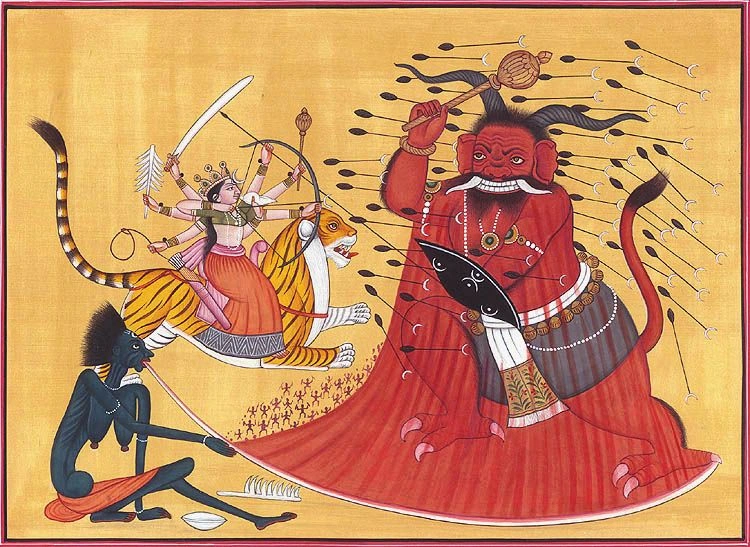
Source: Exoticindiaart
Influences of other religions/cultures on Durga
Throughout history, Durga has been influenced by various religions and cultures. Shaivism and Shakta traditions have heavily influenced the worship and mythology surrounding Durga. Shaivism is the worship of Lord Shiva, and in this tradition, Durga is considered his consort and an essential aspect of the divine feminine. However, the Shakta emphasizes the worship of the divine mother as the supreme deity, with Durga occupying a central position. These influences have shaped the multifaceted perception and recognition of Durga within Hinduism. Durga is revered for her strength, courage, and ability to conquer evil, establishing her a symbol of empowerment and protection for many Hindus (Wikipedia Contributors).
Modern appearances
In today’s world, Durga continues to be an object of worship and admiration, celebrated in various forms of artistic expression such as paintings, sculptures, and digital art. Her depiction as a warrior goddess, equipped with divine weapons and seated atop a lion, symbolizes her persona. Devotees manifest their devotion to Durga through prayers, hymns, and chants, seeking her divine protection and blessings. Dedicated temples to her serve as places of worship, drawing in devotees who offer flowers, incense, and prayers as acts of reverence. Despite the advancement of modern times, her presence remains vibrant and inspires millions of devotees who uphold her reverence through festivals, art, and devotional practices even today.
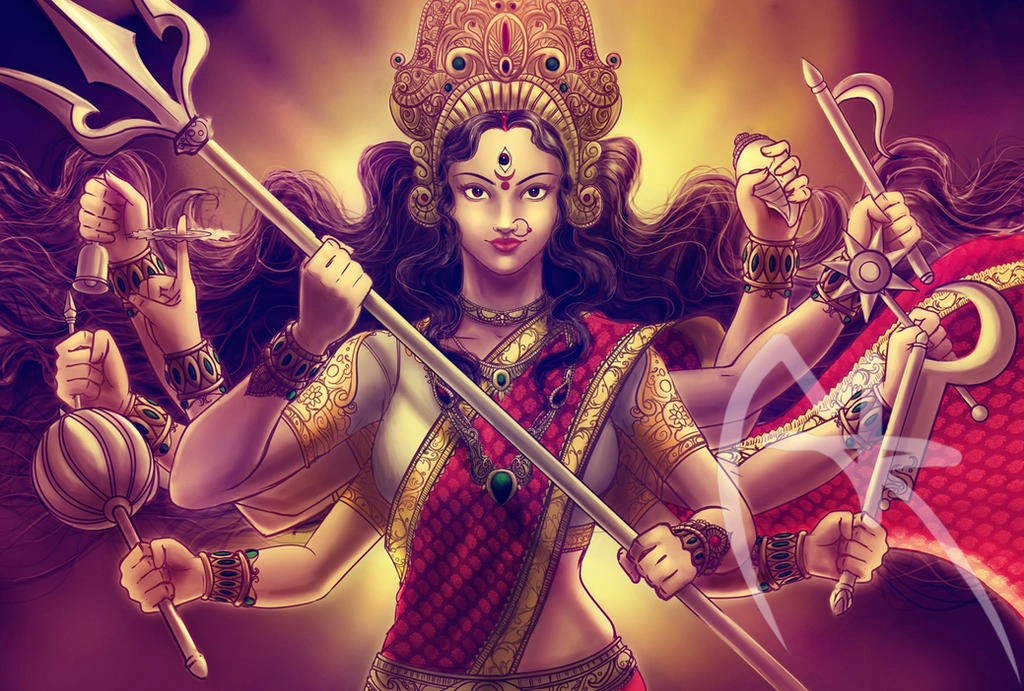
Source: Vedicfeed
Final thoughts
Durga is a timeless embodiment of feminine power and divine love. Her stories and legends have captivated devotees for generations, and her origin stories are as diverse as they are fascinating. From her slaying of the demon Mahishasura to her victory over Raktabija, Durga’s legendary feats have earned her a place of reverence in the hearts and minds of her followers. As a symbol of inspiration, she reminds us of the inner strength and courage that lies within each of us, offering protection and guidance on our spiritual journeys. Her enduring presence continues to inspire and uplift those who seek her divine grace.
References
Chandel, Alisha. “10 Most Important Stories of Goddess Durga.” TemplePurohit – Your Spiritual Destination | Bhakti, Shraddha Aur Ashirwad, 28 May 2022, www.templepurohit.com/10-important-stories-goddess-durga/.
Kumar, Nitin . “Durga – Narrative Art of a Warrior Goddess.” Www.exoticindiaart.com, Apr. 2001, www.exoticindiaart.com/article/durga/. Accessed 16 July 2023.
Mantooth, Katie. “Hindu Goddess Durga: Origins, Symbolism, and Significance.” Study.com, 2022, study.com/academy/lesson/hindu-goddess-durga-history-names.html.
sakhasuadm. “Durga – the Shakti.” Spiritual Blogs of Sakhashree, 21 Sept. 2022, sakhashree.com/durga-the-shakti/. Accessed 16 July 2023.
Wikipedia Contributors. “Durga.” Wikipedia, Wikimedia Foundation, 5 Nov. 2019, en.wikipedia.org/wiki/Durga.
Did we miss something? Do you know another aspect of this legend? Don't hesitate to reach out!
Like this project
0
A client hired me to write several informative pieces on Hindu Goddesses, and this blog post centers around the powerful warrior Goddess, Durga.
Likes
0
Views
266
Tags
Ghostwriter
Blog Writer


